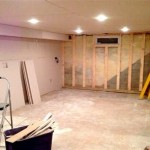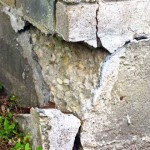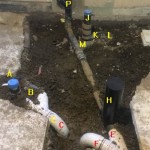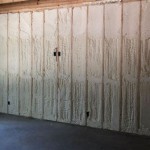How to Stop Water Seepage in Basement Walls
Water seepage in basement walls is a common problem that can lead to damage and mold growth. It can be caused by a variety of factors, including heavy rainfall, poor drainage, and cracked foundation walls. The good news is that there are several effective ways to stop water seepage and protect your basement. This article will discuss the most common causes of basement water seepage and explain how to address them.
Identify the Source of the Seepage
Before tackling any repairs, it is essential to identify the source of the water seepage. This involves examining the basement walls and the surrounding area. Look for cracks or holes in the walls, signs of water damage, and areas where water might be pooling. Once you have located the source, you can determine the best course of action.
Cracks in the foundation walls are common culprits of water seepage. These cracks can allow water to seep through the foundation, causing moisture problems in the basement. You can fix these cracks with a waterproof sealant or by injecting polyurethane foam. For larger cracks, the foundation may require extensive repairs.
Poor drainage around the foundation can also lead to water seepage. Check the gutters and downspouts to ensure they are properly draining water away from the foundation. Consider installing a French drain to divert water from the foundation. This involves digging a trench around the foundation, filling it with gravel, and installing a perforated pipe to collect and drain water away from the basement.
Another potential source of water seepage is the basement windows. Check for cracks or gaps around the windows. If necessary, caulk the windows or replace the window seals. If you have basement windows that are below grade, consider replacing them with waterproof windows or sealing them completely.
Apply a Waterproofing Membrane
One way to prevent water seepage is to apply a waterproofing membrane to the basement walls. This membrane acts as a barrier to prevent water from entering the basement. Waterproofing membranes are available in various materials such as asphalt, rubber, and plastic.
The installation process for a waterproofing membrane involves cleaning and preparing the basement walls. This typically includes removing any loose debris or dirt and applying a primer. Once the walls are prepared, the membrane is applied using adhesives or mechanical fasteners. Ensure that the membrane is installed completely and that all seams are properly sealed.
Repair or Replace Damaged Foundation Walls
Sometimes, the source of water seepage is a more significant problem, like damaged foundation walls. This could involve cracks, bowing, or shifting walls. Repairing these issues can often be challenging and may require professional help. A contractor will assess the damage and recommend the appropriate solution based on its severity.
If the damage is extensive, you might need to consider replacing sections of your foundation. This involves removing the damaged sections, installing new concrete footings, and pouring new concrete walls. This process is time-consuming and costly, but it is necessary to ensure the integrity of your foundation and prevent future seepage issues.
Maintain and Inspect Basement Walls
Preventative maintenance is crucial to prevent water seepage in the basement. Regularly inspect the basement walls for any signs of cracks, leaks, or moisture. Clean up any standing water promptly and address any minor issues before they develop into more significant problems. Proper maintenance can help extend the life of your basement walls and save you money in the long run.
In addition to regular inspections, you should also consider applying a waterproofing sealant to your basement walls. This sealant will help prevent water from penetrating the walls and causing damage. While this solution is preventative, there is no guarantee that the sealant will prevent seepage if substantial damage exists. It's important to note that sealant is not a substitute for more comprehensive waterproofing measures.

Wet Basement Diy Repair Guide Radonseal

How To Fix And Prevent A Leaking Basement Projex

7 Ways To Stop Rain Leaking Into Your Basement Baker S Waterproofing

Wet Basement Walls Causes Solutions Acculevel

Repairing Leaking Basement Walls What Works And Doesn T Work For Wall Leak Repairs

Waterproofing Basement Walls Dos And Don Ts To Remember Bob Vila

Wet Leaking Basement Waterproofing Solutions Albany Schenectady Ny

7 Ways To Prevent Water Seepage In Your Basement

How To Stop Water From Seeping Through Basement Walls

Basement Water Seepage Causes Prevention Mt Drains







